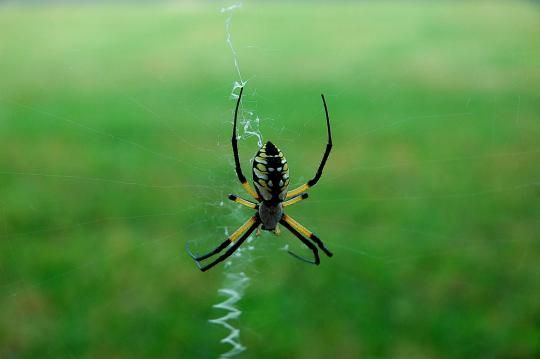|
|
Spider Web
|
Most spiders that hunt actively, rather than relying on webs, have dense tufts of fine hairs between the paired claws at the tips of their legs. These tufts, known as scopulae, consist of bristles whose ends are split into as many as 1,000 branches, and enable spiders with scopulae to walk up vertical glass and upside down on ceilings. It appears that scopulae get their grip from contact with extremely thin layers of water on surfaces. Spiders, like most other arachnids, keep at least four legs on the surface while walking or running.
• Silk production
The abdomen has no appendages except those that have been modified to form one to four (usually three) pairs of short, movable spinnerets, which emit silk. Each spinneret has many spigots, each of which is connected to one silk gland. There are at least six types of silk gland, each producing a different type of silk.
Silk is mainly composed of a protein very similar to that used in insect silk. It is initially a liquid, and hardens not by exposure to air but as a result of being drawn out, which changes the internal structure of the protein. It is similar in tensile strength to nylon and biological materials such as chitin, collagen and cellulose, but is much more elastic, in other words it can stretch much further before breaking or losing shape.
|
|









